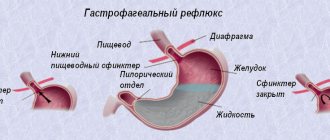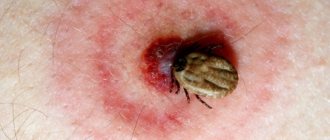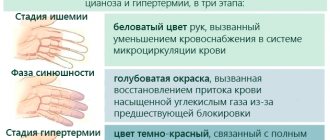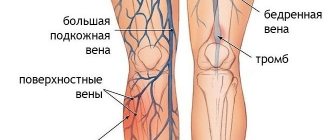What is an "intestinal infection"?
Intestinal infections include diseases that primarily affect the gastrointestinal tract, causing intoxication and dehydration of the body. Intestinal infections in children are especially dangerous and are often much more severe than in adults.
Most diseases that belong to this group cause similar symptoms and are treated with special broad-spectrum drugs, which are often prescribed before a specific strain of the pathogen is identified.
The causative agent can be both viruses and bacteria. By multiplying in the child’s body, they produce toxins that enter the blood from the digestive tract and cause systemic poisoning. After ARVI, this group of diseases ranks second in prevalence. Moreover, children are more susceptible to pathogenic microorganisms than adults.
In most cases, the disease can be prevented by following simple preventive measures. If this is not given due attention, the episodes are repeated, which will affect the physical and mental development of the child in the future.
Intestinal infections in children: situations when a child needs a doctor
Intestinal infections (like any other) in children can be either viral or bacterial - the difference, as the names indicate, is in the nature of the pathogen. Among viral intestinal infections in children, the most common is rotavirus.
In addition to rotavirus, the most common intestinal infections in children include:
- Salmonellosis
- Enterovirus
- Dysentery
According to WHO statistics, about 2 million children under the age of 5 die from intestinal infections every year worldwide.
However, do not be afraid or despair! Pediatricians say that more than 90% of all cases of intestinal infections in children can be overcome without the use of any special medications, at home, just by observing measures against dehydration of the child’s body.
However, there remains an insidious and terrible 10% of intestinal infections in children - these are those cases of the disease when there can be no talk of any self-medication. When the main task of the parents and relatives of the baby is to deliver the child to the hospital to infectious disease professionals as quickly as possible.
So, if you suspect an intestinal infection, the child immediately needs urgent medical attention if:
- 1 It is impossible to give him something to drink (the child either cannot swallow the water or immediately regurgitates it back);
- 2 Blood clots are found in stool or vomit;
- 3 Clear signs of dehydration are detected, which include:
- dry skin and mucous membranes;
- so-called “dry” tongue;
- lack of tears and sweat;
- lack of urination (never peed in the last 5-6 hours).
- 4 Diarrhea or vomiting has the following associated symptoms:
- the child is very chilly;
- his skin is pale in color;
- or a rash appears on the child’s skin;
- there is a sharp and strong increase in body temperature;
- The baby complains of a severe headache.
The first signs of an intestinal infection
The first stage of intestinal infection is manifested by a violation of the general condition - weakness, malaise, drowsiness, headache. During this period, discomfort in the digestive system and heaviness in the stomach may occur.
Such symptoms occur at the stage of spread of a virus or bacteria through the gastrointestinal tract and its consolidation in the organ. After this, the process of active reproduction begins, which leads to a more pronounced clinical picture and a deterioration in the patient’s condition.
Effective therapy
Treatment of intestinal infection should involve an integrated approach. In addition to stopping harmful microbes, the patient needs to neutralize toxins and restore water balance.
Symptoms such as vomiting and diarrhea release harmful substances from the body, so there is no need to restrain yourself. On the contrary, during this period they even call her. Treatment of intestinal infection cannot be done without intestinal lavage. This procedure is performed using an enema. It is also necessary to treat the disease with the help of sorbents that neutralize the negative effects of toxins. The most effective are:
- Smecta;
- Polyphepan;
- Attapulgite.
During the period of intestinal infection, patients benefit from fasting. The reason is that food can cause bacteria to develop. Rice and oatmeal porridge without adding salt are healthy. They have a calming effect on the intestines.
It is indicated to treat intestinal infections with a solution of rehydron or behydron. These medications help restore electrolyte balance during illness. They are taken in a couple of sips every 10 minutes. During an intestinal infection, the patient needs to drink more fluids. The best option would be dried fruit compote and various herbal teas.
As for antibiotics for intestinal infections, it is not recommended to use them immediately after the onset of the first symptoms. They have a negative impact on the intestinal microflora and the normal functioning of the gastrointestinal tract. Treatment of intestinal infection with antibiotics can only be prescribed by the attending physician. It is allowed to treat the disease with such modern drugs as Linex and Lactobacterin.
It is also not recommended to treat an intestinal infection on your own during a period when the patient has severe and debilitating vomiting, as a result of which he cannot drink, has a high fever, and there are blood impurities in the feces.
Treatment of the disease in children
Treatment of intestinal infection in children
If an intestinal infection in a child is accompanied by severe diarrhea and vomiting, then it is necessary to immediately take action and treat the resulting illness. The most common mistake parents make when treating an intestinal infection is to stop the unwanted symptoms of the disease. It is not recommended to do this in the first hours, since vomiting and diarrhea are a protective reaction of the body, as a result of which the body tries to eliminate toxins on its own.
If these manifestations are stopped during the treatment of intestinal infections in children, this will lead to even greater intoxication. In addition, if parents know exactly what their baby has eaten and the rise in temperature and abdominal pain are caused by this, then in order to effectively treat an intestinal infection, vomiting or bowel movements should be provoked.
During such events, it is very important to constantly replenish the loss of fluid and mineral salts. Therefore, when treating intestinal infections in children, parents should ensure that they take plenty of fluids. To do this, you need to give him special solutions, powders that are sold in pharmacies. It is forbidden to give your child juices and dairy products.
Nutrition
If the disease is mild, then to treat an intestinal infection, the diet involves only reducing the amount of food. If the disease is in a moderate form, then food is reduced by 30–50%, and the number of meals should be 5–8 times a day.
The diet for intestinal infections in children under 4 months should exclude the use of fermented milk mixtures. In case of acute illness, treatment of intestinal infection with a diet in infants involves the use of mixtures enriched with protective factors: bifidobacteria, lactobacilli, and dietary supplements.
When treating an intestinal infection with diet, adults are prohibited from consuming the following foods:
- whole milk;
- black bread;
- yoghurts;
- fermented baked milk;
- cream;
- beets;
- legumes;
- citrus;
- meat and fish broths.
If the development of an intestinal infection in a young child is accompanied by the occurrence of protein deficiency, then it is corrected from the 3rd day of the disease with mixtures that contain this element. When the exocrine function of the pancreas is impaired and malabsorption syndrome is developed, medicinal mixtures are an effective treatment for intestinal infections in young patients.
Symptoms of intestinal infection
A typical symptom of an intestinal infection is diarrhea. Based on the presence of the disorder, many parents determine the type of disease their child has and the need to see a doctor. Intestinal infections require mandatory medical consultation, as they can quickly worsen the child’s condition and cause life-threatening consequences.
Common symptoms of intestinal infection:
- diarrhea;
- nausea;
- vomit;
- abdominal pain;
- loss of appetite;
- general weakness;
- loss of interest in games, drowsiness;
- temperature increase.
Symptoms arise due to the fact that the pathogen leads to disruption of the digestive processes, as well as inflammation of the intestinal mucosa. Depending on the location of the lesion, there are:
- Acute enteritis. Inflammation in the small intestine. Due to impaired digestion and absorption of food, the main symptom is frequent diarrhea. Stool may contain pieces of undigested food, be foul-smelling, and have a variety of abnormal colors.
- Acute gastritis. The pathogen is localized in the stomach. The main symptoms are nausea, pain, vomiting. Such conditions usually occur with food poisoning.
- Acute colitis. The large intestine becomes inflamed. The stool may contain pus and mucus.
In addition, doctors identify mixed forms (with damage to two or more departments), as well as generalized inflammations that extend beyond the digestive tract. According to the nature of the course, intestinal infection can be acute, protracted and chronic.
Symptoms of intestinal diseases of bacterial origin
Dysentery - begins quickly and sharply with diarrhea and subsequent intoxication of the body. Symptoms are a constant urge to defecate, which does not bring relief, or in small quantities with an admixture of pus and mucus. The temperature rises with stabbing pain in the iliac abdomen.
A complicated form of the disease may be accompanied by neurotoxicosis or hypovolemic shock.
If there is a lack of fluid in the body, this becomes noticeable by external signs: dry and inelastic skin appears, a feeling of dryness on the mucous membranes, facial features become sharpened, eyeballs sink in, and extreme thirst worries.
Salmonellosis can manifest itself in different ways.
In infants and up to one year old , it occurs in an acute form, affecting the stomach, small and large intestines. If the baby is also weakened or born prematurely, he may develop sepsis with damage to the lungs, joints, bones, meninges, and kidneys by pustular formations.
In children from three years of age, salmonellosis manifests itself in a gastric or gastroenteric quality with incessant vomiting, intestinal stabbing pain and dark green stool.
The typhus-like form of the disease is characterized by impaired consciousness, headaches, vomiting, and rash.
Escherichiosis occurs acutely with symptoms of toxic damage: fever, weakness, vomiting, lack of appetite, often yellow-orange stool mixed with foam, mucus or greens.
yerosiniosis from pets, unwashed hands or contaminated fruits.
The disease occurs in two variations:
- generalized with pain in the abdominal area, fever, loose stools, damage to the spleen, liver, sclera and conjunctiva of the eyes, possible rash and, in case of weak immunity, sepsis;
- localized with abdominal pain, intense gas formation, green liquid stool with a foul odor and mucus.
Causes and prevention of intestinal infection
Intestinal infections can be caused by different types of microbes. All of them enter the body through the nutritional route - through the gastrointestinal tract. Nature has given humans natural protective forces - bactericidal saliva, aggressive gastric juice, immunity, but in some cases microbes manage to reach their target and settle in the human body.
Regardless of the type of pathogen, the main cause of intestinal infections is non-compliance with sanitary and hygienic rules. You can meet a pathogenic bacterium or virus everywhere - on the street in a hospital, on unwashed food, and so on. However, there are many ways to prevent active microbes from entering a child. Unfortunately, children are not as responsible as adults, so these methods of protection do not give the desired results. The child pulls dirty hands and unknown objects into the rock - thus, he learns about the world, develops fine motor skills and exposes himself to the risk of getting an intestinal infection.
Intestinal pathogens include Escherichia coli, salmonella, staphylococcus, Vibrio cholerae, and enteroviruses. Some of them cause very serious conditions in children, others cause mild illness with characteristic symptoms. The source of infection may also differ - water, dairy products, berries, household items.
Once in the body, the pathogen most often affects a certain part of the digestive tract - the stomach, small or large intestine. As a result, the patient develops characteristic symptoms and test results change.
However, the pathogen is not activated in every organism. Under equal environmental conditions, one child can get sick, and the other can remain healthy. The state of general immunity, intestinal microflora, level of physical development and the presence of negative emotions and stressful conditions play a role here. All this is considered to be provoking factors that contribute to the activation of pathogenic flora and the onset of the disease.
To prevent intestinal infection, it is enough to follow simple hygiene rules:
- Wash your hands before eating, after each visit to the toilet and after going outside.
- It is advisable to heat treat food and water.
- Avoid contact with sick people, be especially careful in hospital premises.
- Follow the rules for storing food and get rid of spoiled ones in a timely manner.
If a child comes into contact with a person infected with an intestinal infection, he is given a bacteriological examination and clinical symptoms are monitored for a week.
Causes
The causative agents of intestinal infections in children can be:
- bacteria (Shigella, Salmonella, diarrheagenic Escherichia, Yersinia, Campylobacter, Staphylococcus, Klebsiella, etc.) and their toxins (botulinum toxin);
- viruses (roto-, adeno-, entero-, astro-, corono-, toro-, caliciviruses, etc.);
- protozoa (giardia, cryptosporidium, amoebas, blastocysts, etc.).
Penetration of infection into the body during intestinal infections occurs mainly through the consumption of contaminated food (by nutrition), contaminated water (by water), through contaminated hands, dishes, toys, household items (by contact and household). Intestinal infections of viral etiology can also be transmitted by aerogenic (airborne) routes. Viruses cause the largest number of cases of intestinal infections in children under 5 years of age.
In children with weakened immune systems, endogenous infection with opportunistic microflora (staphylococci, Klebsiella, Proteus, Clostridia, etc.) is possible.
Diagnostics
The very fact of the presence of a pathogen in a child’s body does not indicate the development of an intestinal infection. Without a corresponding clinical picture, a child is considered simply a carrier of a certain strain. This is possible with a high level of individual immunity to the isolated microbe. At the same time, a virus or bacteria is quite dangerous for other people.
The pediatrician suspects an intestinal infection after listening to the patient’s complaints. The characteristic clinical picture makes it possible to distinguish intestinal infection from other diseases with a high probability. However, the final diagnosis is made based on the results of laboratory tests and bacteriological culture.
One of the most informative studies that must be carried out if intestinal diseases are suspected is bacteriological culture of stool. In a few days, the results will show the qualitative composition of the intestinal microflora, in which doctors will determine the pathogenic species. Theoretically, treatment tactics and selection of drugs depend on the results of this analysis.
If the process is widespread, the child’s blood, urine and cerebrospinal fluid are also examined. On days 5-6 from the onset of the disease, it is possible to use serological methods that will show the presence and concentration of antibodies to a specific pathogen. When examining a coprogram, doctors can understand the localization of the process, since the enzymatic function of the affected organ will be impaired.
Due to acute abdominal pain in a child, the doctor must differentiate an intestinal infection with appendicitis, pancreatitis, biliary dyskinesia, and lactase deficiency. Several specialists can take part in making a diagnosis - pediatrician, gastroenterologist, pediatric surgeon.
general information
All acute intestinal infections (acute intestinal infections) are characterized by symptoms such as intoxication with elevated body temperature, damage to the gastrointestinal tract and the development of dehydration (dehydration) due to pathological fluid loss.
In children, intestinal infections are mostly acute diseases of an infectious nature that are caused by bacteria and/or viruses. Susceptibility to pathogens of acute intestinal infections in children is significantly higher (2.5–3 times) than in adults.
Every year, sporadic outbreaks are recorded that provoke intestinal infections. The high likelihood of OCI in a child is explained by the immaturity of protective mechanisms, unstable microbial flora in babies (especially premature babies), frequent contacts in closed groups (kindergartens, nurseries, schools), and neglect of hygiene.
The variety of pathogens that cause intestinal infections in childhood determines a large number of clinical signs and treatment methods in which tablets, solutions, syrups, and suppositories are used. All this dictates the need for every parent to understand this topic in more detail.
Treatment of intestinal infection
The approach to treatment must be comprehensive. Attention is paid not only to the fight against the pathogen, but also to the restoration of the body, since the worst thing about an intestinal infection is the dehydration to which it leads. With a large loss of fluid and essential salts, death can occur hours after the onset of the disease. It is especially important to closely monitor these indicators in children. The severity of intestinal diseases is determined precisely by the degree of dehydration of the body, and not by the frequency of stool.
The second danger is intoxication. Since the pathogen is localized in the gastrointestinal tract, its toxins are quickly absorbed into the blood and spread throughout the body. This can damage vital organs, particularly the baby's kidneys, making it even more difficult to remove toxins.
Symptomatic therapy for intestinal infections is extremely necessary, but it will not be able to stop the pathological process. Etiotropic treatment is the most effective, but it is complicated by the fact that it usually takes about 3 days to isolate the pathogen strain, which can be critical for the child. As a result, doctors immediately prescribe a special group of antimicrobial drugs, without waiting for study results.
Treatment of intestinal infection includes several areas:
- Fighting the pathogen. It is carried out using medications that are classified as antimicrobial agents. Their peculiarity is that they act locally and are not absorbed into the systemic circulation. Thus, it is possible to avoid systemic side effects and target the pathogenic microbe.
- Eliminate symptoms. Medicines are selected depending on the clinical picture. To eliminate diarrhea and fluid loss, drugs based on loperamide are prescribed, abdominal pain is relieved with antispasmodics, and the temperature is reduced with antipyretics.
- Restoration of water and electrolyte balance. This is one of the main directions of therapy, which helps prevent complications and death. A child with an intestinal infection must drink fluids constantly. Preference is given to pharmaceutical oral rehydration products that contain a balanced complex of ions, as well as glucose. If the child is unable to drink, for example due to vomiting, fluid is administered intravenously in a hospital setting.
- Detoxification. It will be possible to speed up recovery and improve the patient’s well-being if you remove toxins that produce pathogenic microorganisms from the body. For this purpose, sorbents are prescribed, and plenty of warm drinks are also useful.
- Hunger. For the first two days, it is recommended to give the child only drinks. The liquid should be supplied frequently, but not in large portions, so as not to stretch the stomach and provoke vomiting. After this, crackers, baked apples and viscous porridges are introduced into the diet.
After the acute condition has been relieved, as well as after the patient has recovered, restorative therapy is carried out, which includes taking vitamins and probiotics. The work of the gastrointestinal tract does not immediately return to normal rhythm, so enzyme preparations are prescribed to help the body, as well as a gentle diet that reduces the load on the digestive organs.
What and how to treat
At the first symptoms of an intestinal infection, you should definitely call a doctor or an ambulance, especially if the child is small. Treatment usually takes place at home. In severe cases (prolonged body temperature of 39 °C or higher, incessant diarrhea, vomiting, signs of dehydration, febrile convulsions), the child must be hospitalized in a hospital.
Intestinal infection in children is treated comprehensively and includes:
- Antibacterial therapy . Its use is only advisable for intestinal infections caused by bacteria.
- Infusion (performed in a hospital). Intravenous administration of drugs to quickly replenish lost fluids and salts in the body.
- Rehydration (at home). The drug Regidron is prescribed to replenish fluids and salts in the body. The patient is also shown mineral water without gases, tea, water with lemon, cranberry juice, and chamomile infusion. The liquid is administered slowly, one teaspoon at a time, with a break of 5 minutes, otherwise a large amount of liquid drunk at once may cause vomiting.
- Supportive therapy . Prescription of drugs that normalize the microflora of the gastrointestinal tract.
- Therapeutic diet . Nutrition should be as gentle as possible. Under no circumstances should you force a child to eat if he doesn’t want to. Breastfed infants should continue to breastfeed on demand. If you are bottle-fed, then low-lactose, lactose-free or soy formulas are indicated. Older children are advised to eat easily digestible, pureed food. During infection, you should not consume whole milk, brown bread, milk porridge, beets, citrus fruits, fatty meats, poultry, and fish. You can eat potato, pumpkin, squash, carrot puree, dry non-bread cookies, white bread croutons, vegetable soup with rice, porridge (buckwheat, rice) in water, boiled pureed meat, low-fat fermented milk products (kefir, cottage cheese, yogurt, yogurt) , baked or grated fruits (pears, apples, bananas).
Disease prognosis
Complete and rapid recovery of children after an intestinal infection is possible with timely initiation of treatment, which prevents dehydration of the body. Immunity to the identified pathogen is developed, but it is not stable.
Severe forms of the disease can lead to complications such as pulmonary edema, renal failure, toxic shock, and hypovolemic shock.
Prevention of the disease is quite simple - you need to follow the rules of hygiene and teach them to your child. It is much easier to wash your hands before eating or sanitize a baby's bottle than to deal with vomiting and dehydration.
Routes of infection
Source of infection
The source of infection is an asymptomatic carrier or a sick person who releases pathogenic microorganisms into the external environment through vomit, feces or urine. The release of microbes occurs from the onset of the disease until complete recovery (disappearance of all symptoms). In the case of viral infections, it continues after recovery for two to three weeks. Thus, a person who has an intestinal infection or who had it less than two weeks ago is a source of disease for others.
Pathogen transmission mechanism
The mechanism of transmission of any intestinal infection is nutritional. That is, the pathogen always enters the body through the mouth. This occurs when consuming contaminated food or water, as well as when a child accidentally licks dirty hands or objects, etc.
Routes of infection
Infection most often occurs through the oral-fecal route , for example, by drinking dirty, unboiled water or accidentally ingesting it while swimming in reservoirs, as well as consuming milk and dairy products, meat, eggs, cakes, etc.
In second place is the household route , in which infection occurs as a result of contact with toys, towels, door handles or dishes contaminated with bacteria. The child transfers pathogens to his hands, and then, simply by accidentally licking his hands or eating something, introduces germs into his mouth, which leads to the development of an intestinal infection.
Thus, the main cause of the disease is failure to comply with hygiene standards (washing hands after visiting the toilet, before eating or preparing food, after contact with a sick person, etc.). In addition, long-term storage of food products plays an important role, since they may become contaminated with microbes when touched with dirty hands. This method of transmission is characteristic of intestinal infections of bacterial origin.
As for intestinal infections of viral etiology, they are mainly transmitted through household or airborne routes. So, for example, an adult carrier of the infection or an asymptomatic patient with it kisses the child on the cheek, after which the baby wipes off the remaining saliva with his hand, and the pathogens end up on his skin. After some time, he will pull his hand into his mouth, and thereby infection will occur. Also, infection with a viral intestinal infection occurs through close contact of children with each other (in kindergarten or on the playground).
Diagnosis of the disease
To confirm the development of an acute intestinal infection, the doctor first interviews the patient, asking what he ate in the last 24 hours. To confirm the suspected diagnosis and identify the pathogen, the patient is prescribed the following procedures:
- a detailed blood test to identify the nature of the infection (bacterial, viral, etc.);
- biochemical blood test (detecting electrolyte imbalance in the body);
- bacteriological examination of stool (helps determine the type of intestinal infection);
- general urine test (helps assess the condition of the kidneys, which are extremely sensitive to infections and intoxications);
- electrocardiogram (detects heart rhythm disturbances that occur against the background of water-electrolyte imbalance);
- Ultrasound of internal organs (helps identify abnormalities in the liver, kidneys, bladder and pancreas).
Reasons for appearance
Fresh vegetables contain thousands of harmful bacteria.
An adult comes into daily contact with various microorganisms, sometimes not always harmless. Once in the body, their activity and existence is neutralized by gastric juice, saliva, protective forces, and native beneficial bacteria.
But there are exceptions:
- reduced immunity;
- beneficial microflora destroyed by antibiotics;
- not a healthy lifestyle, a person becomes an easy target for an intestinal viral infection.
The most common cause of intestinal infection, both in children and adults, is failure to comply with basic hygiene standards:
- Unwashed hands before meals, after being in public places, the restroom;
- Buying food in markets where the goods are open to flies for tasting;
- Properly unwashed raw vegetables, fruits and insufficiently thermally processed meat and fish;
- Japanese cuisine using raw fish is very popular among the adult population;
- Swallowing water from bodies of water in which (due to mentality) relieving oneself besides swimming is the norm!
Drug treatment
Medicines intended to treat intestinal infections are prescribed by a doctor on the basis of laboratory tests, through which the type of causative agent of the disease is identified. So, if the infection is viral in nature, then antiviral drugs are prescribed. If the source of the disease is bacteria, the patient is prescribed antibacterial tablets.
Since intestinal poisoning the most pronounced symptoms are intoxication and stool disturbances, first of all, they need to be eliminated. This is achieved by eliminating from the body of the diseased pathogenic agent that caused the disease. It is also necessary to normalize the water-electrolyte balance in the intestines and remove toxic substances from the body. To achieve the latter, it is necessary to treat the patient with sorbents.
Treatment of intestinal infection includes taking the following groups of drugs:
- antibiotics;
- antiviral agents;
- sorbents;
- medicines for diarrhea;
- enzymes;
- painkillers.
How to treat intestinal infection in adults at home
An intestinal infection can be easily treated at home and does not require complex medical procedures; the main thing is an integrated approach, including stopping the action of microbes and neutralizing existing toxins. In terms of efficiency, the leading positions are occupied by:
- diosmectite;
- attapulgite;
- Activated carbon.
The fight against toxins takes place in different ways, because the body also strives to get rid of them as quickly as possible, hence vomiting and diarrhea. Experts advise doing gastric lavage (in the absence of vomiting), intestinal lavage, using an ordinary enema, which everyone has at home. The water-salt balance is easily restored when using a rehydron solution; you need to drink it often, but little by little. Restoring microflora is the work of modern, widely advertised “Linex”, “Lactobacterin”. By the way, according to doctors, lactobacilli have a positive effect on internal organs.
At the moment, as doctors admit, there are no effective treatments for rotavirus infection. Therefore, many sick people are in no hurry to consult a doctor and are looking for methods of treatment with folk remedies in adults. You can use natural absorbents, restore the water balance with the help of herbal teas, regular dried fruit compote, and diet.
Patients with fever should not rely on their own strength and medicinal plants. In this case, assistance should be provided in full and in a medical facility. The same applies to cases when severe vomiting begins and blood is present in the feces.
Prevention
The basis for the prevention of intestinal infections in children is compliance with sanitary and hygienic standards: protecting water from contamination, proper storage and processing of food, isolating infectious patients, disinfecting dishes and toys in children's institutions, as well as instilling hygiene skills in children. When caring for a breastfeeding baby, a mother should not neglect cleaning the mammary glands, bottles and nipples before feeding, and washing her hands after each washing and swaddling of the baby.
General symptoms of OCI
Infectious diseases develop rapidly, and therefore no more than 6–24 hours usually pass from the moment of infection to the onset of painful symptoms. The infections in question manifest themselves as the following syndromes:
Toxic syndrome
When it occurs, the patient develops a low-grade fever (up to 37.5°C). True, in the case of cholera there may be no temperature at all, but with infection with staphylococci it can be short-lived and rise no higher than 38°C.
Typically, high fever is accompanied by symptoms such as pale skin and dizziness, weakness and body aches, nausea and vomiting.
Intestinal syndrome
Depending on the microbe that caused the infection, the symptoms of the disease differ. To figure out which microbes have affected the body, let’s consider several of the most characteristic syndromes:
- Gastritis syndrome. It causes epigastric pain and constant nausea and vomiting. Vomiting is usually repeated and does not bring relief. Sometimes the gag reflex appears after an ordinary sip of water. Additional symptoms include loose stool, often one-time.
- Gastroenteritis syndrome. Its first sign is aching pain localized in the center of the abdomen. In this case, the stool becomes mushy, and a little later – watery. Different microbes also affect the color of the stool (with eschirichiosis it is yellowish, and with salmonellosis it has a green tint). In addition, the stool becomes mucous and fragments of undigested food may appear in it.
- Enteritis syndrome. In this case, there is no abdominal pain, and the infection manifests itself as diarrhea with watery stools.
- Gastroenterocolitis syndrome. The pain does not leave the person for a minute; he is tormented by diarrhea with loose stools, and after the act of defecation, the long-awaited relief does not come. And mucus and blood streaks appear in the patient’s stool. All this is aggravated by frequent and profuse vomiting.
- Enterocolitis syndrome. It is characterized by severe pain throughout the abdomen. This condition is complemented by frequent, painful bowel movements with liquid feces mixed with mucus.
- Colitis syndrome. The sensation of aching pain is localized in the lower abdomen (usually on the left). The patient suffers from painful diarrhea, often with mucus and streaks of blood. This syndrome is characterized by the presence of a false urge to defecate without relief after visiting the toilet.
Speaking about diseases, let's say that:
- if you are characterized by gastroenterocolitis or enterocolitis syndromes, you probably have salmonellosis;
- if you have symptoms of colitis and enterocolitis, perhaps dysentery or escherichiosis is raging in your body;
- if all symptoms indicate enteritis syndrome, there is a high probability that you are affected by cholera;
- If painful symptoms resemble gastroenteritis syndrome, rest assured, a rotavirus infection has settled in your intestines.
Providing first aid for intestinal infection
Help with the development of an intestinal infection should be provided in the first minutes of symptoms . The development of this disease can be determined by a rapidly rising temperature and profuse stool, and a deterioration in the person’s condition. When the first clinical signs of this disease develop, you need to call an ambulance.
Remember that self-treatment of intestinal infections in adults at home is very dangerous and can lead to serious consequences. Only a doctor, after a detailed examination of the patient, can prescribe the correct etiological treatment.
While waiting for doctors to arrive, begin providing first aid to the poisoned person. Thanks to it, you can slightly alleviate the patient’s condition and reduce the severity of intoxication syndrome.
Below are the main steps you can take to help a sick person before the ambulance team arrives.
Gastric lavage
Why rinse it, you ask, if intestinal poisoning occurs after a certain incubation period, the dangerous food has long left the gastric cavity? In fact, this procedure will help remove some of the toxins and waste products of microorganisms and will significantly improve the patient’s well-being .
It should also be taken into account that acute poisoning may manifest itself at first in similar symptoms, in which cleansing the stomach is the main emergency life-saving procedure. To rinse your stomach, you will need plain water at room temperature. You need to drink 2-3 glasses of water in one gulp and induce a vomiting attack by pressing your finger on the root of the tongue.
According to modern first aid protocols, the use of potassium permanganate solution for gastric lavage is discouraged by doctors . The effectiveness of this method is no greater than using ordinary water. An improperly prepared rinsing solution based on potassium permanganate can cause acute poisoning and burns of the mucous membrane of the esophagus and stomach.
Cleansing enema
It helps remove toxins formed in the intestines under the influence of pathogenic bacteria . It is carried out on the basis of simple boiled water. To carry it out you will need an Esmarch cup, baby cream or Vaseline. For enemas, you should use only water at room temperature. Hot and cold liquids are contraindicated.
Sorbents
Any sorbents, for example, sorbex, atoxil, smecta or activated carbon for intestinal infections, can be taken at the stage of first aid. These drugs help neutralize and remove toxins from the intestines and reduce the level of intoxication syndrome .
Before taking the drug, you should carefully read the instructions and check the expiration date of the drug. The recommended dosage should be observed and not exceeded.
Drink plenty of fluids
Liquid must enter the body in large quantities . It can be plain or mineral water, weak black or green tea. You should drink constantly, little by little. For example, five sips every 10 minutes.
The rest of the assistance will be provided by ambulance and hospital doctors. Basic drugs against intestinal infection will be prescribed after a detailed examination of the patient and diagnosis.
Types of intestinal infections, methods of their transmission
What diseases are intestinal infections and how can you get them? This question, at first glance, is simple, but many, confusing infections with poisoning, cannot give an accurate answer to it and recognize a life-threatening condition in time.
Intestinal infections include a large number of different diseases. Some of them occur in an acute form and pose a danger to the patient, while others pass safely and quickly.
The main route of transmission of intestinal infection is fecal-oral . A person can become infected from a sick person or from someone who has recently had the disease. Sometimes, in the period after an illness, people remain carriers of bacteria and are dangerous to others.
An outbreak of intestinal infection can develop in people who eat food prepared by an infectious person. Bacteria get into food through hands not washed after using the restroom.
Each type of intestinal infection has its own characteristics in the routes of transmission and spread among the population. Pathogens can spread not only from person to person. Some foods are natural reservoirs for them .
Below are the main types of intestinal infections and the characteristics of their transmission to humans.
Dysentery
Dysentery, or the disease of dirty hands, is an infectious disease that is widespread throughout the planet. Most often it develops in the hot season .
Caused by Shigella bacteria. You can become infected from a sick person, as well as by drinking contaminated water, unwashed vegetables or fruits. Outbreaks of dysentery are common in the summer. People may swallow contaminated water while swimming in ponds. The mentality of our people allows them to relieve themselves while swimming, thereby exposing other swimmers to the risk of infection.
Salmonellosis
This intestinal infection is very insidious. often multiply in food products without changing their taste .
You can become infected with salmonellosis by eating eggs, dairy and meat products, and sausages. At the same time, the food consumed can be fresh and of high quality, and not have any abnormal smell or taste. Most often, a person becomes infected with salmonellosis by consuming chicken or duck eggs from infected birds. At the same time, the eggs are no different from normal ones; it is impossible to suspect infection without laboratory tests.
The bacteria caused by salmonellosis is found inside eggs, not on the shell. For some reason, there is an opinion among the population that if you wash an egg thoroughly, you can protect yourself from salmonellosis. Eggs certainly need to be washed, but this will not protect you from this intestinal bacterial infection.
Cholera
This intestinal disease is one of the most dangerous. A person can die in a matter of hours from the loss of a large amount of water and severe intoxication .
Fortunately, in our time it does not happen often, its episodes are isolated. Cholera epidemics most often develop in the summer.
You can get sick by drinking contaminated water or swimming in bodies of water. A sick person can infect others while preparing food with dirty hands. Vibrio cholerae can be carried by flies.
Rotavirus
This viral intestinal disease is popularly called “intestinal flu”, since it manifests itself not only with symptoms from the digestive system, but with catarrhal symptoms characteristic of ARVI .
Rotavirus is a seasonal disease, and its outbreaks most often develop in the autumn-winter period.
You can get infected from a sick person.
This infection is transmitted by the fecal-oral route.
Enterovirus
Enterovirus outbreaks are very common.
This pathogen can be transmitted from person to person. also accumulate in soil and food products . The virus can remain active for a long time while remaining on personal hygiene items.
A person who has had an enterovirus infection is dangerous to others for a long time and may remain a carrier of the infection for a certain period.











